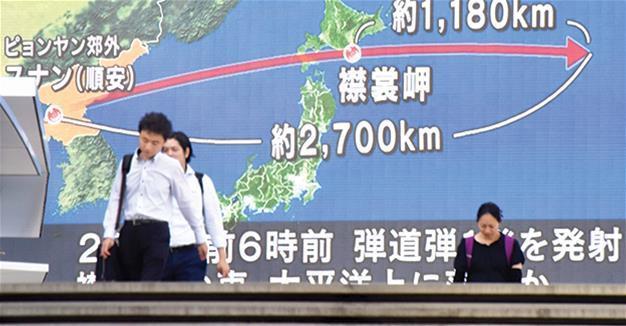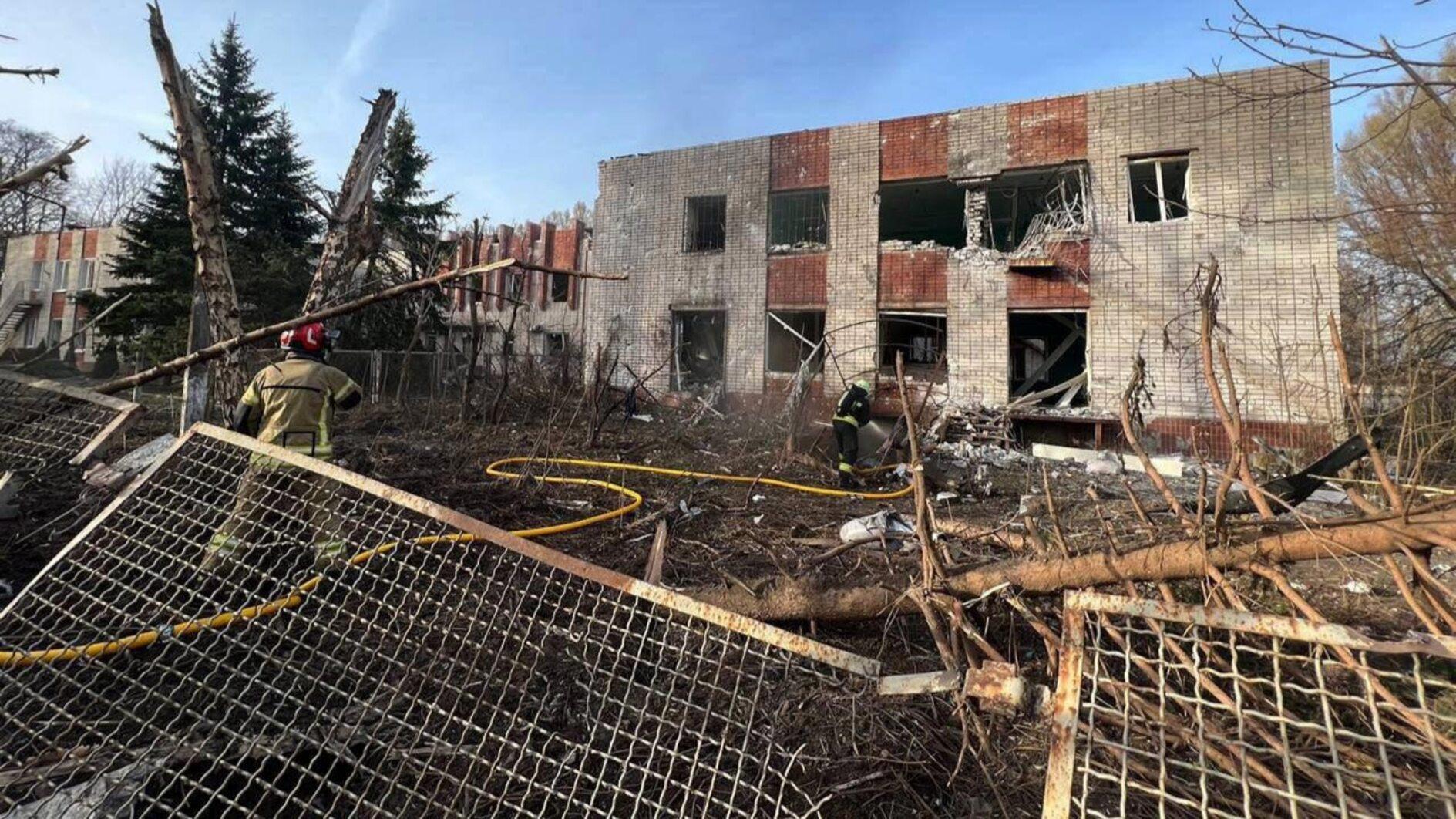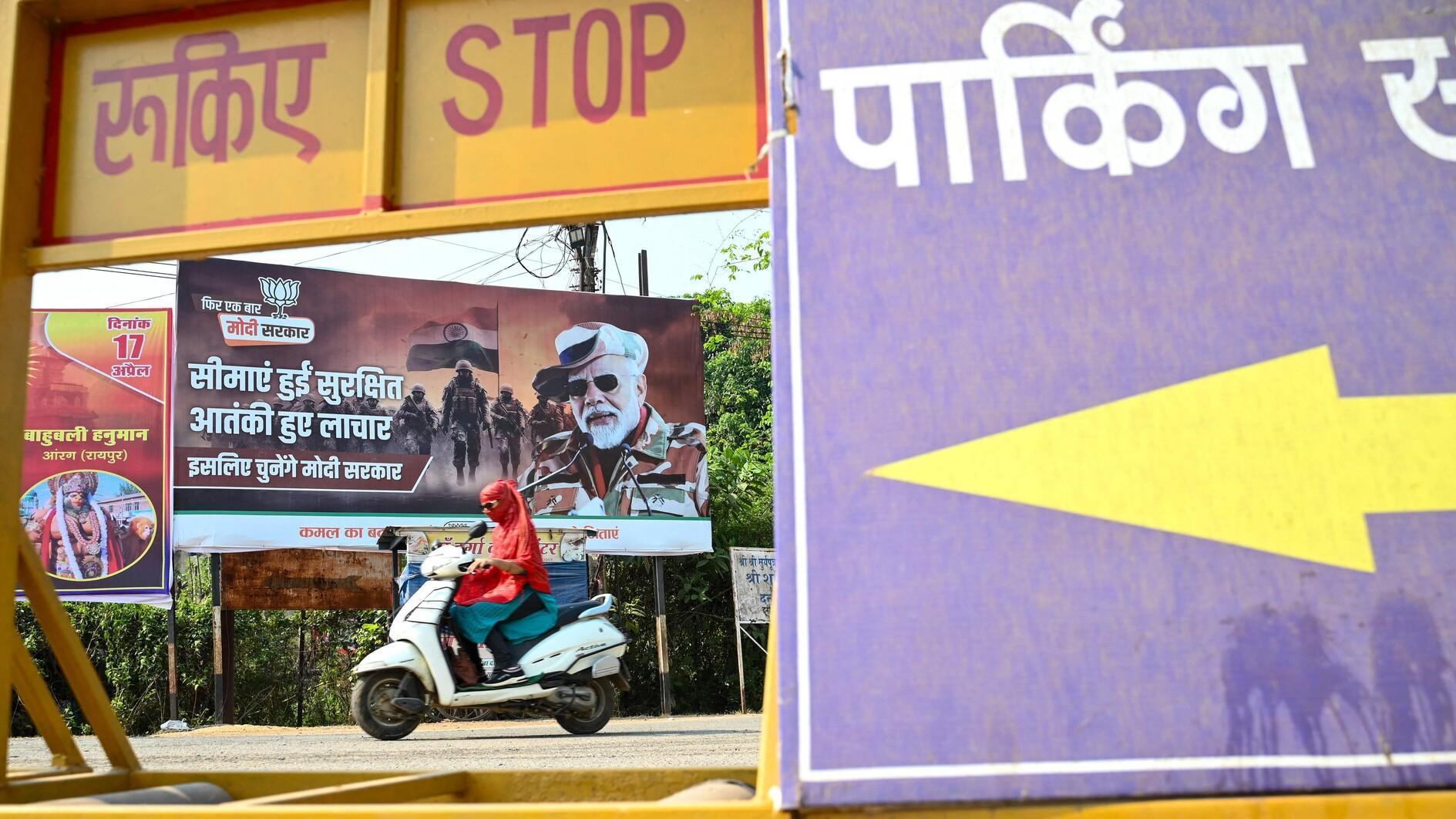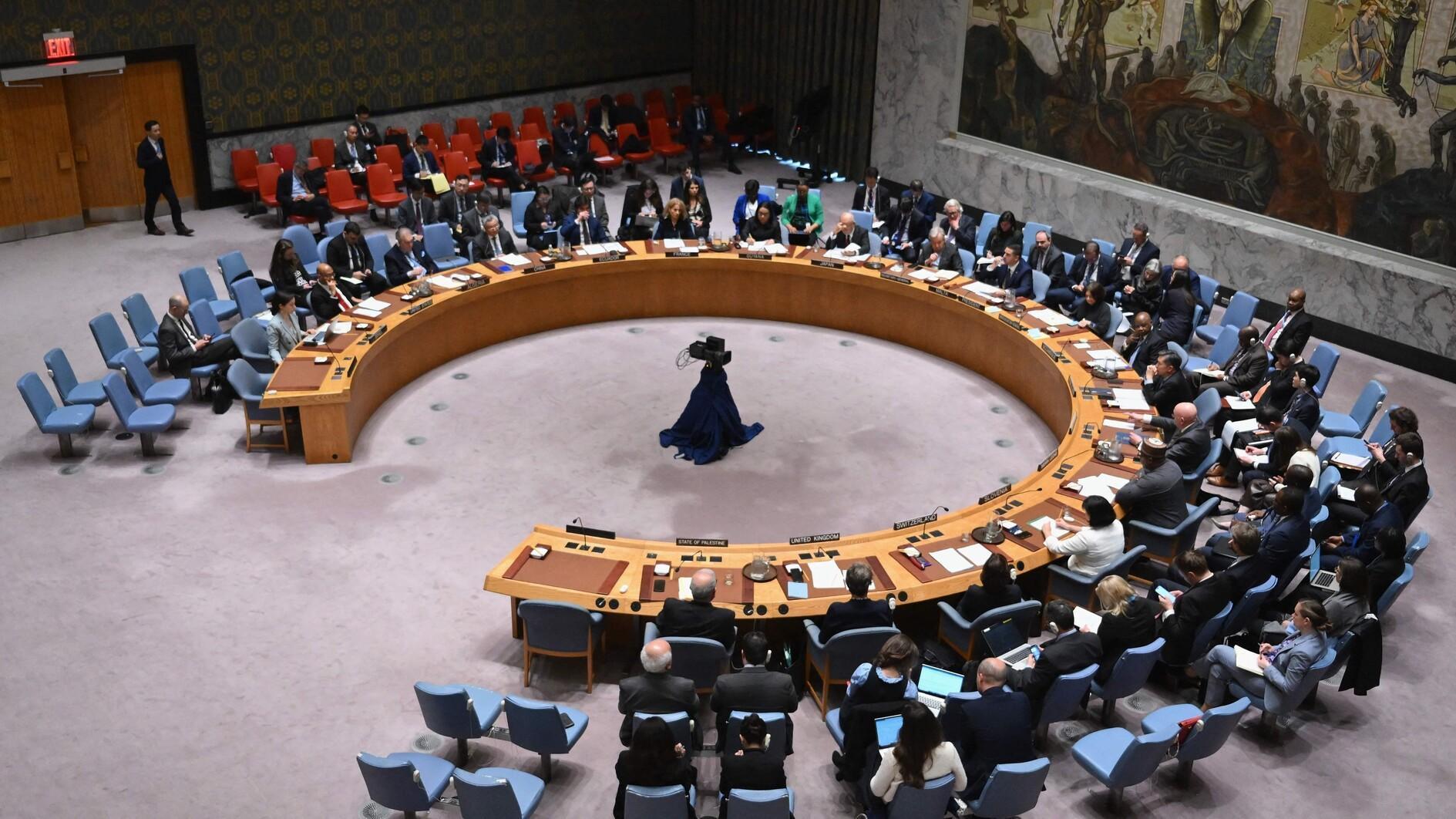N Korea’s missile launch over Japan escalates tension
TOKYO / SEOUL - Reuters
 North Korea fired a ballistic missile over Japan’s northern Hokkaido island into the sea early on Aug. 29, prompting warnings to residents to take cover and drawing a sharp reaction from Japanese Prime Minister Shinzo Abe.
North Korea fired a ballistic missile over Japan’s northern Hokkaido island into the sea early on Aug. 29, prompting warnings to residents to take cover and drawing a sharp reaction from Japanese Prime Minister Shinzo Abe.The test, one of the most provocative ever from the reclusive state, came as U.S. and South Korean forces conduct annual military exercises on the peninsula, to which North Korea strenuously objects.
North Korea has conducted dozens of ballistic missile tests under young leader Kim Jong Un, the most recent on Aug. 26, but firing projectiles over mainland Japan is rare.
“North Korea’s reckless action is an unprecedented, serious and a grave threat to our nation,” Japanese Prime Minister Shinzo Abe told reporters.
Abe said he spoke to U.S. President Donald Trump on yesterday and they agreed to increase pressure on North Korea. Trump also said the United States was “100 percent with Japan,” Abe told reporters.
South Korea’s military said the missile was launched from near the North Korean capital, Pyongyang, just before 6 am and flew 2,700 kms, reaching an altitude of about 550 kms.
Four South Korean fighter jets bombed a military firing range on Aug. 29 after President Moon Jae-in asked the military to demonstrate capabilities to counter North Korea.
South Korea and the United States had discussed deploying additional “strategic assets” on the Korean peninsula, the presidency said in a statement, without giving more details.
North Korea remained defiant.
“The U.S. should know that it can neither browbeat the DPRK with any economic sanctions and military threats and blackmail nor make the DPRK flinch from the road chosen by itself,” North Korea’s official Rodong Sinmun said later on Aug. 29, using the initials of the North’s official name, the Democratic People’s Republic of Korea.
Some experts said the test appeared to have been of a recently developed intermediate-range Hwasong-12 missile, but there was no clear consensus.
This month, North Korea threatened to fire four missiles into the sea near the U.S. Pacific territory of Guam after Trump said it would face “fire and fury” if it threatened the U.S.
“Alas, Pyongyang has demonstrated that its threats to the U.S. base on Guam are not a bluff,” Konstantin Kosachev, chairman of Russia’s upper house of parliament’s international affairs committee, said on social media.
North Korea fired what it said was a rocket carrying a communications satellite into orbit over Japan in 2009 after warning of its plan. The United States, Japan and South Korea considered it a ballistic missile test.
Japan’s Chief Cabinet Secretary Yoshihide Suga said the latest missile fell into the sea 1,180 kms east of Cape Erimo on Hokkaido.
Television and radio broadcasters broke into their regular programming with a “J-Alert” warning citizens of the missile launch. Bullet train services were temporarily halted and warnings went out over loudspeakers in towns in Hokkaido.
“I was woken by the missile alert on my cellphone,” said Ayaka Nishijima, 41, an office worker on Honshu island.
“I didn’t feel prepared at all. Even if we get these alerts there’s nowhere to run. It’s not like we have a basement or bomb shelter, all we can do is get away from the window,” she told Reuters by text message.
U.S. Secretary of State Rex Tillerson appeared to make a peace overture to North Korea last week, welcoming what he called the restraint it had shown by not conducting any tests since July.
The United States has said all options, including military, are on the table, although its preference is for a diplomatic solution.
Some experts said Kim was trying to pressure Washington to the negotiating table with the latest tests.
“[North Korea] thinks that by exhibiting their capability, the path to dialogue will open,” Masao Okonogi, professor emeritus at Japan’s Keio University, said by phone from Seoul.
“That logic, however, is not understood by the rest of the world, so it’s not easy,” he said.
The Japanese military did not attempt to shoot down the missile, said Minister of Defense Itsunori Onodera. The missile may have broken into three pieces, but that was not clear, he added.
Experts say defenses in Japan and South Korea that are designed to hit incoming missiles would struggle to bring down a missile flying high overhead.
In Washington, the Pentagon confirmed the missile flew over Japan but said it did not pose a threat to North America and that it was gathering information.
China’s Foreign Ministry reiterated its calls for restraint on all sides, saying it opposed North Korea going against U.N. resolutions to launch missiles but adding that sanctions and pressure could not solve the issue.
















